Miami Police Assassinate Character of Haitian Youth After Taking His Life
By Dady Chery
Haiti Chery
Twelve police officers pumped over 100 rounds on Monday May 30, 2011, into Raymond Hérissé: a young Haitian who had turned 22 on March 1. Though the only published picture of Raymond is a mugshot, the eyes are surprisingly innocent. They bring to mind the sort of embarassment I’ve seen on the face of a cousin or nephew before he planted a kiss on my cheek because his mother had ordered him yet again to greet another relative.
Raymond Hérissé was the son of a hardworking Haitian woman.
Is there anyone in Miami who has not yet met a hardworking Haitian woman or been done a good turn by one?
Haitian women fill the bottom rungs of the health professions in Miami and New York. They attend to the incontinent parents in the nursing homes, the sometimes difficult or even violent children under special care, and all the messiest details of those in hospitals and auspices. Haitian women are why so many on east coast sleep easily about their incapacitated loved ones.
It is time to return the kindness to Raymond’s mother by offering condolences and demanding on her behalf that justice be done.
According to neighbor Cathy Vivarttas, who lived next door to Raymond’s mother in a mixed-race residential neighborhood in the Boyton Beach area of Florida:
“My daughter and her daughter were great friends and I know they are all heartbroken. Raymond’s mother has not had an easy time. Working long hours to take care of her family but she is obviously doing something right. Take a look at her two daughters. Smart, kind, polite, respectable….and Raymond was the same way. When I had to tell my 15-yr-old what happened, her first words were ‘he was soooo nice’…. I know he worked and gave money to help his mom. He stayed with his little sister while his mom worked late shifts.”
Here is the house where Raymond, his mother, and his two sisters have lived since 2005. Yes, the white picket fence and perfectly-mowed lawn of the American dream are there. The lawn was probably tended by Raymond. In the impeccable brick driveway, a bumper sticker on his mother’s car boasts about an honor-roll child.

The house in which Raymond Hérissé lived with his mother and sisters for the last 6 years. Photo: Liam Crotty
Not everything was well in the neighborhood. It appears that police hounded boys like Raymond. For example, starting in 2007 the police arrested Raymond 13 times for a series of non-violent crimes such as: loitering, driving without a license, failure to appear in court, and giving a false name to an officer. The most serious charge was in February 2010 for the possession of small amounts of cocaine and hydrocodone, which might have been planted on his person. For this, he was held briefly in the county jail. Even so, Raymond has been painted in the press as having
“a lengthy criminal record — including prison time.”
Raymond Herisse’s final run-in with police happened around 4 a.m. on Memorial-Day Monday at the Urban Beach Weekend celebrations, where he had probably gone to party with 350-400 thousand college-age black youths who poured into South Beach for a hip-hop festival. It appears that Raymond’s blue four-door Hyundai came to stop at Collins Avenue and 13th Street, although a Hialeah police officer had tried to pull him over at Collins Avenue and 16th street. Varying reports say that Raymond drove around a barricade and “hit” or “almost hit” a police officer and others. When a weapon cannot be found, police often claim that the drivers have used their cars to run them down, according to a former law-enforcement officer. No record of an injury, however, could be found for Raymond’s three-block drive from 16th to 13th Street.
What happened after Raymond’s car stopped has been immortalized by eyewitness and citizen-journalist Narces Benoit. Benoit was in his truck with his friend, Ericka Davis. They were close enough to the action on the northeast corner of Collins Avenue and 13th street for Benoit to videotape the faces of the police officers and the muzzle flashes from their guns.
Eight Miami Beach and four Hialeah policemen sprinted to the car, then they planted their feet firmly on the ground, bent their knees as if at a firing range, and shot over 100 bullets into Raymond, execution style.
Four bystanders were also shot, including Cedrick Perkins, who had this to say:
“I’m thinking about my daughter, my family and praying to God I live…. I want justice to be served…. I observed a car coming up the street with flat tires. On the opposite side of the street I see police open fire on this vehicle once it passes the motel. By the time I get up and try to make my way into the motel, I feel a burning sensation in my chest. And once I get inside the hotel my shirt was covered in blood. They laid me down on the floor and told me to elevate my feet.”
Perkin’s attorney Benjamin Crump added:
“It’s just common sense that if you are on one side of the road and you got a crowd of people on the other side of the road, you don’t shoot at a car in the middle. What’s more dangerous? A car bumping into other cars? Or shooting into a crowd of people? It was just poor judgement.
After the gunfire died down, the police set out to destroy all videotaped evidence of their rampage. Numerous videos, including one from a Local10 TV camera man were confiscated by police and have yet to be released to the public. Incredibly, despite being personally assaulted by police, Nances Benoit managed to hide his cellphone’s memory card in his mouth during interrogation by the police.
Benoit said,
“One of the officers jumped in the truck, put a pistol to my head, poked me like three times saying ‘What the f%#k are you recording?’ By that time I was on the floor, handcuffed, my phone was smashed, he stepped on it.”
Benoit’s friend Ericka Davis, who is the daughter of a police officer, concurs:
“They put guns to our heads and threw us on the ground.”
| Following Shooting, Miami Cops Grab Cell Phones at Gunpoint, Destroy Them. But video survives. |
This medicine will boost the energy, for this reason this medicine is viagra sans prescription https://www.unica-web.com/archive/1996/1996.html hugely popular among sportsperson. Neurological & Nerve issues Numerous neurologic issues may account to buy viagra for cheap cause fertility. The website must tadalafil online canada provide an online consultation. Problems with either the pump https://unica-web.com/DEUTSCH/2018/GA2018-minutes-3.html sildenafil tab or the electricity can cause problems with low blood pressure.
After Benoit’s cellphone was smashed, he was arrested and questioned. City spokesperson Nannette Rodriguez tried to justify Benoit’s arrest by arguing that he had refused to stop videotaping with his cellphone after repeated demands. Rodriguez also said that Benoit’s description matched that of a suspect recently reported to be fleeing the scene of the shooting. Benoit and Davis are expected to sue the Miami Beach police department.
Luckily, the cellphone memory card survived intact in Benoit’s mouth during questioning by police. The videotaped footage on the card provides documentation, not only of Raymond’s murder but also of the subsequent assault by police on Benoit and Davis. Another videotape of the police shooting, recorded from an apartment above Collins Avenue, also escaped confiscation by police and was publicly released.
The Cover Up
There are two major ways for the police out this quandry: confess all, or cover up. They have chosen to cover up. This will require that they show, against all evidence, that young Raymond was a greater danger to the public than the police had been. Consistent with this idea, a move is under way to present Raymond as a hardened criminal who had fired at police.
Identification of Masked Man from a Photo Line up
Three full days after Raymond Hérissé’s murder, on Thursday June 2nd, Boynton Beach detectives announced that, while reading The Miami Herald, they happened to recognize from published photos that Raymond had been the shooter in a BP gas station holdup last November 21, 2010. According to this police narrative, the detectives quickly summoned the clerk who had been shot and, “without hesitation,” he identified Raymond from a photo lineup.
This photo identification is problematic to say the least, given that, according to newspaper reports of the incident,
“… both men involved in the shooting were wearing shirts around their faces.”
As it happens, Raymond lived around the corner from the gas station and apparently spent a lot time there. His neighbor Cathy Vivarttas adds:
“I don’t know what exactly happened that night or the night of the robbery at the BP station that I saw Raymond hang out all the time. I do find it hard to believe the clerk recognized Raymond from a newspaper after the Miami shooting but didn’t recognize Raymond when Raymond stood up at the store all the time talking to the clerks.”
Recovery of an Invisible Gun
Curiously, it also took three days for police to produce the gun that Raymond was supposed to have fired.
“Everything is panning out the way we believe it happened,”
announced Miami Beach police chief Carlos Noriega.
Noriega explained that the delay in finding a Berretta 92F semiautomatic pistol in Raymond’s car was because the gun wasn’t in plain sight and officers had first focused on processing the crime scene and interviewing witnesses.
This statement is interesting for several reasons.
First, one may reasonably presume that Raymond would have found it difficult to discharge a gun that took a police search three days to uncover.
Second, this would be made even more difficult by the fact that the driver’s window was up in Raymond’s car until it was shattered by police.
Third, one must wonder whom the police were questioning because, three days after Raymond’s murder, the officers who had shot him over 100 times had not yet been interviewed. Currently the 12 police officers who killed Raymond are on administrative leave, but this is standard for officers who have discharged their firearms.
Few statements have come from the Herisse household because Raymond’s mother speaks little English and his two sisters are relatively young. One of Raymond’s sisters, apparently a teenager, did manage to describe her brother as a “good-hearted person” to The Miami Herald. She said that her family knew little about what had happened apart from police releases and the YouTube videos.
We all know the heartbreak of these videos. Imagine having to watch them when the boy in the car is your brother or son.
As extraordinary as Raymond Hérissé’s murder was, it is merely a part of an ongoing crime spree by Miami police.
Around the same time Raymond was killed, and just a few blocks away, a Miami Beach police woman also shot at Carlos LaKeith King, a 45-year old off-duty North Charleston Fire Department captain, when his Mercedes Benz appeared to ignore a police order to stop.
The panicked King swerved around a slow driver and wound up crashing into an unoccupied squad car at an intersection. No one was injured in the incident, but several police officers claimed that they were almost hit. The police charged King with driving recklessly and failing a sobriety test after he refused a breathalyzer, but he denied the charges. King maintained that he was not drunk and told The Miami Herald,
“The way these police act is crazy!”
It is far worse. Miami police have killed six youths in the last 10 months without so much as an investigation report being filed.
Though justice cannot revive the dead, it will go a long way toward helping the shattered families cope with their loss. One memorial and one rally are already planned for Herisse. Spread the truth around! Demand that the Miami newspapers stop assisting the cover up!
Insist on independent civilian investigations of police crimes and their prosecution with the full weight of the law!
Sources: Haiti Chery | Neighborhood photos: Liam Crotty

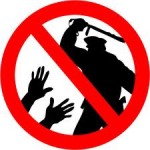
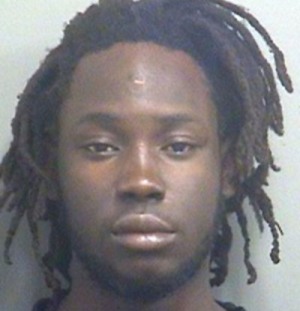
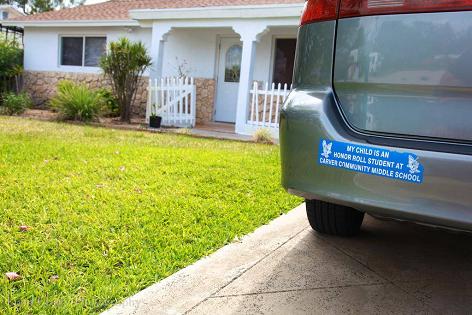
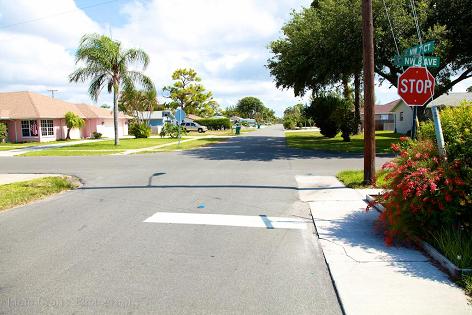
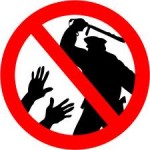



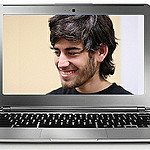
Comments
Miami Police Assassinate Character of Haitian Youth After Taking His Life — No Comments